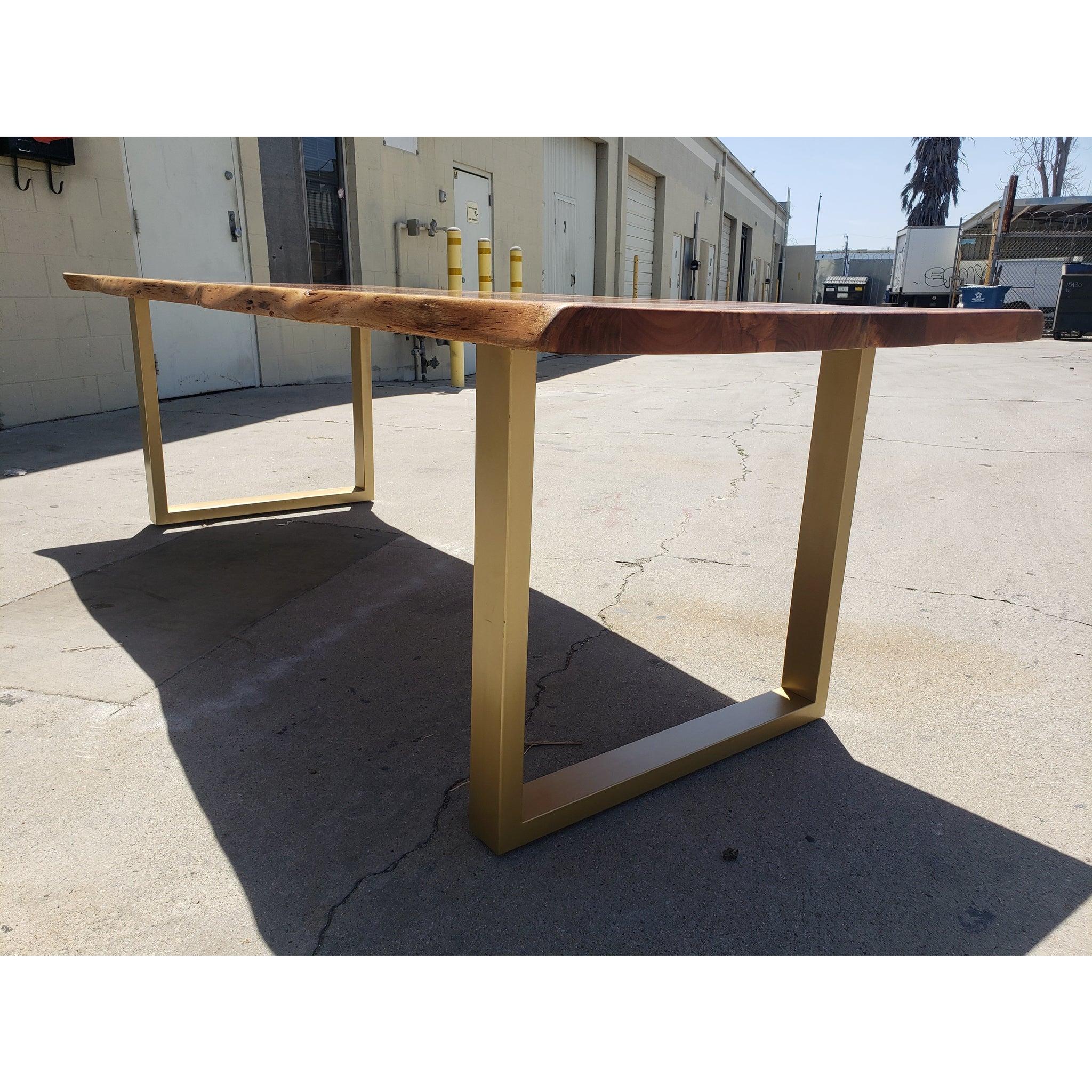Exploring the Various Sorts Of Table Legs Wood for Your Dining Room
The option of eating table legs wood can profoundly impact both the functional and aesthetic high qualities of your eating room. Solid wood alternatives, such as oak and walnut, offer a traditional look with unparalleled longevity, while crafted wood alternatives supply ingenious designs that resemble the richness of natural grains.
Solid Timber Options

Unlike crafted materials, strong wood is less vulnerable to bending and damages over time when properly maintained. Each item of solid timber is one-of-a-kind, showcasing specific characteristics that include to the beauty and personality of the eating table.
In addition, solid timber can be finished in various ways, varying from all-natural oils to discolored finishes, permitting home owners to individualize their furniture to match their style. In recap, choosing solid wood for dining table legs not just makes certain architectural honesty yet also improves the aesthetic appeal of the eating area, making it a worthwhile investment for any kind of home.
Engineered Wood Alternatives

Plywood, constructed from multiple layers of timber veneer, is secure and especially strong, making it an excellent selection for dining table legs. Its split make-up allows it to hold up against adjustments in moisture and temperature level much better than traditional strong wood. MDF, on the other hand, supplies a smooth surface for paint or veneering, allowing developers to accomplish a polished appearance while maintaining structural integrity.
When choosing engineered wood alternatives, it is important to take into consideration the desired usage and preferred aesthetic. These products not only improve the capability of dining areas but additionally allow for greater style versatility, ensuring that modern and conventional designs can exist side-by-side harmoniously.
Reclaimed Timber Features
Recovered wood uses an one-of-a-kind blend of sustainability and character, making it a significantly preferred choice for dining table legs. Sourced from old barns, factories, and other frameworks, reclaimed timber symbolizes a history that brand-new materials simply can not replicate. Each piece brings its very own tale, noted by distinct flaws, knots, and varying grain patterns, which add to a table's one-of-a-kind aesthetic charm.
Along with its aesthetic charm, recovered wood is an environmentally friendly option. By repurposing formerly used materials, it lowers the demand for new lumber, therefore assisting have a peek at this website to decrease and save forests waste. This lines up with an expanding customer choice for lasting techniques in decor.
Furthermore, redeemed wood is usually extra resilient than newly gathered wood due to its age. The all-natural drying procedure that recovered timber goes through cause a denser and more powerful product, making it much less vulnerable to bending and splitting. This boosts the longevity of dining tables, permitting them to withstand the roughness of everyday use.
Softwood vs. Hardwood
When picking eating table legs, Bonuses understanding the differences between softwood and wood is essential for accomplishing both useful and aesthetic objectives. They usually exhibit a more rustic appearance, making them suitable for laid-back or country-style dining areas.
On the various other hand, woods, sourced from deciduous trees like oak, cherry, and maple, are renowned for their density, toughness, and durability. The elaborate grain patterns and rich tones of woods supply a ageless and innovative charm, making them ideal for formal dining setups. While woods have a tendency to be much more pricey and heavier, their resilience against wear and tear usually justifies the investment.
Inevitably, the choice in between softwood and wood for dining table legs ought to align with your style vision, usage requirements, and budget plan, ensuring that your dining space shows your individual design while continuing to be practical with time.

Treatments and finishes
The aesthetic charm and durability of table legs can be dramatically improved through different coatings and therapies. These procedures not just safeguard the wood from damages however additionally raise its look, permitting it to match varied indoor styles.
One usual treatment is discoloring, which penetrates the wood and enhances its all-natural grain while adding shade. Stains offer a rich, elegant look, allowing homeowners to match their furniture with existing decoration. Conversely, clear coatings such as polyurethane or varnish develop a safety layer without changing the wood's original tone, making certain longevity against damage.
Additionally, all-natural oils, like tung or linseed oil, nourish the wood and provide a subtle sheen, all while being environment-friendly. These oils permit the surface to take a breath, protecting against dampness accumulation and potential warping.
For those looking for a rustic charm, weather-beaten or troubled surfaces can be used to create an aged look, adding character to the piece. Eventually, the option of finishes and treatments relies on personal choice, wanted appearances, and the details wood kind, making it necessary to take into consideration these variables when selecting table legs for your area.
Final Thought
Solid woods, crafted alternatives, and recovered alternatives each deal unique advantages, catering to different preferences and requirements. Inevitably, the option of timber kind need to straighten with wanted style, longevity, and environmental factors to consider, boosting the total eating experience.
The selection of dining table legs wood can profoundly impact both the aesthetic and functional qualities of your eating area - Dining Table Legs Wood. Strong wood alternatives, such as oak and walnut, provide informative post a timeless look with unmatched durability, while crafted wood options provide innovative styles that resemble the splendor of natural grains. Strong wood provides a timeless quality that can boost the overall design of an eating area. Each piece of strong timber is distinct, showcasing individual qualities that add to the beauty and character of the eating table
Furthermore, redeemed wood is commonly much more durable than newly collected timber due to its age.